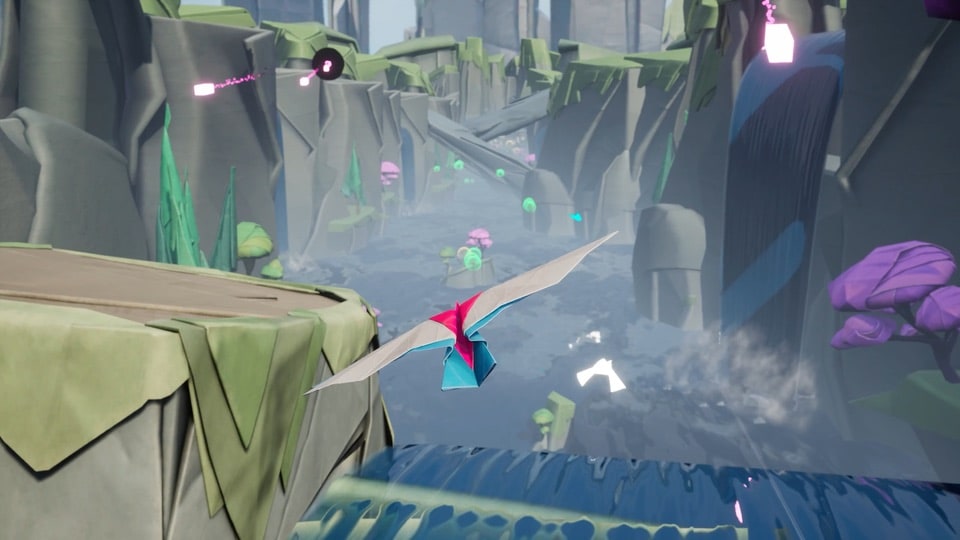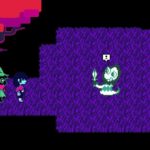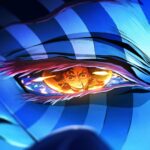Hirogami is an origami platformer. What that means is that much of the world around you is made of paper, folded into elaborate shapes, and so are you. In fact, you can fold yourself into a variety of animal themed shapes to help you navigate your way through Hirogami’s levels, puzzles, and fights. But is it worth taking a gamble on, or should you just…fold?
Hiro is a little origami person who used to be able to fold himself into other forms. Unfortunately, he lost this ability when coming into contact with the blight that is ravaging the landscape, corrupting temples and animals alike. Now Hiro is stuck in his cool-origami-figure-with-a-cape self, so his self confidence isn’t great. Nevertheless, he’s still tasked with cleansing some corrupted temples and, whilst doing so, discovers that cleansing a corrupted animal will reawaken some of his missing power, allowing him to fold himself into the shape of that animal.
In addition to his humanoid form and just being a piece of paper, which is more useful than you might think, there are four animals you can shift into once you defeat them in-game. The armadillo can roll up into a ball and roll forward very quickly, handy for destroying obstacles and enemies alike, the frog can jump higher than all the other forms as well as spit sticky saliva at enemies, and the gorilla can smash things and swing on vines. The fourth form, the bird, only happens during certain gameplay sequences, and functions more like a fighter jet, complete with a boost and ranged attacks somehow.
You’ll be switching in and out of these forms regularly. The way it works I think is quite brilliant, with you holding the right trigger to flatten yourself into a simple piece of paper, then pressing a face button to refold yourself into your chosen form. Whilst you’re a piece of paper, you can also fit through tight gaps, float through the air, and ride up drafts. It’s a smart little bit of design, but it does have a few finicky little bits that get in the way. The most common one is that, when you’re unfolding into paper as you’re approaching something you need to break, you often find a corner of your now rectangular self goes under a little bit of scenery, which blocks you from transforming and forces you to back up again so you have space to transform. It’s a tiny little thing, but it happens so often and breaks the flow of the platforming.
It doesn’t help that the platforming is a bit simple anyway, so it starts to get repetitive after a few hours, especially once you’ve already unlocked all the animal forms. It’s a lot of fun initially, and switching between the forms multiple times to make it through a section can be very satisfying, but with the few control difficulties getting in the way, the challenge not really ramping up enough, and much of the stuff you’re doing being things you’ve done in other, more accomplished platformers, it just starts to get a little old after a while.
Combat is the same, but with one or two poorly considered enemies. One enemy just triggers a damaging shield when you get close, which it is happy to keep up for an extended period of time and retrigger almost immediately as you approach, making it a very annoying enemy to deal with. I’ve found that the best tactic in combat is to roll up into a ball as an armadillo and just charge into everything, both because it’s effective and because it’s good, chaotic fun – when there aren’t shielded enemies in the way, forcing me to switch to a frog and spit at them before I can hit them.
What doesn’t help either the combat or the platforming is the camera, though. It tries to frame the action on its own, without giving you control beyond tilting the camera, and that means the perspective can change from a pseudo third person view, to side scrolling, to awkward angles that feel slightly askew and make platforming a little more difficult to judge. There was one moment where the camera fully swung through the scenery as I was entering a new area, completely blocking the character and level from view, my only option was to continue going forward and hope it worked itself out before I hit a hazard or enemy, which it thankfully did. Similar things can happen during combat, where you can find yourself obscured by scenery, making it difficult to dodge incoming armadillos and apes. This fixed camera is at best inconvenient, but at its worst it can be an issue resulting in death.
One area where there is little to criticise is the aesthetic of the game. It’s gorgeous, whether you’re on the tilt-shift heavy overworld map or in one of the levels – it’s a very good looking game whichever way you look at it. What is a bit disappointing is the music, not because it isn’t good, but because there isn’t enough of it. The soundtrack repeats quite a bit and is often at odds with what’s going on in game. There shouldn’t be whimsical, happy music while I’m dealing with a giant lake of lava, for example. It just doesn’t feel right.
There are some oddities with how the game is presented as well. Levels are usually in a chain, at the end of the first level you can see the next area where you’ll be going to next, but it cuts to the overworld map after a brief chat or cutscene. Then you go start the next level, and you can see the end of the previous level, and you’re now in the next area, but for some reason you had to go to the world map to get here. It’s just a little strange. Another odd aspect is when you’re cleansing corrupted temples and altars. You have to go find a macguffin that is usually at the end of some platforming sequence, or a fight, or just something, but one or two just…aren’t. Just climb up a vine and there it is, no challenge involved. It just feels odd.







This sounds like a unique and creative concept! The blend of origami and platforming elements could lead to some really interesting gameplay experiences. Looking forward to hearing more about it!
It really is a fascinating mix! The way the game uses paper mechanics could lead to some innovative puzzles and challenges, making each level feel fresh and engaging. I’m curious to see how they incorporate traditional origami techniques into the gameplay!
Absolutely, the paper mechanics really add a unique layer to gameplay! It’s interesting how they can also influence puzzle-solving elements, making each level feel fresh and engaging. I can’t wait to see how they expand on this concept in future updates!
You’re right! The paper mechanics not only enhance the gameplay but also create a visually stunning environment. It’s fascinating to see how the folding and unfolding elements influence both the puzzles and the character’s movements throughout the levels.